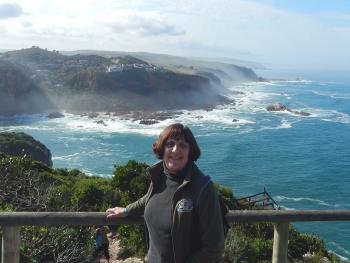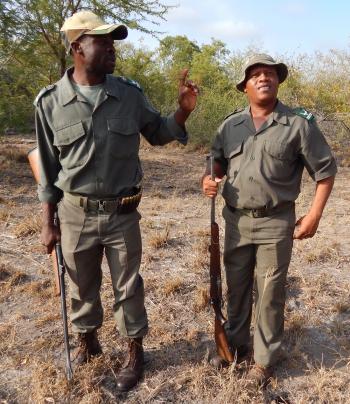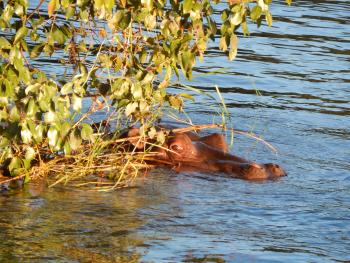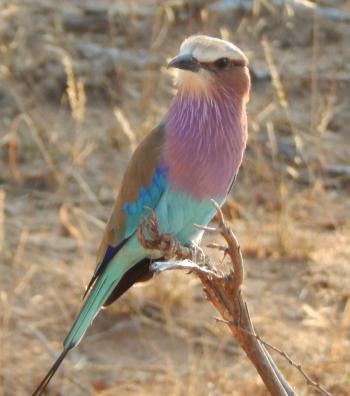Exploring South Africa, malaria-free
This article appears on page 46 of the September 2017 issue.
During some of my recent adventurous travels, I was greatly disappointed to learn that I get severe reactions to all of the various antimalarial drugs. For this reason, I thought I would never be able to go on an African safari.
However, I consulted my physician and did a significant amount of research, and, with the information I discovered, I was able to take a magnificent trip to South Africa with Grand Circle Travel (Boston, MA; 800/221-2610, www.gct.com). I booked GCT’s “Highlights of South Africa” trip, traveling from May 12 to June 11, 2016.
Researching the trip
In order to ensure a malaria-free trip, I did extensive research, gleaning information from the CDC’s website (www.cdc.gov) as well as from the British site Fit for Travel (www.fitfor travel.nhs.uk). One of the biggest differences between the two was that, while the CDC recommended drugs even for low-risk countries, Fit for Travel suggested instead that, for “low to no risk” countries, only bite-prevention measures were needed. For me, this made all the difference.
It is important to understand what contributes to the low-risk factor. Because a malarial mosquito first needs to bite an infected host to transmit the disease, if there are not many recent cases of malaria in the country or area where you will be traveling and you are traveling during a low-transmission season, as I was planning to do, the risk factor goes way down.
Additionally, the CDC website, for many of the countries I researched, had small print that said, specifically, “This risk estimate is based largely on cases occurring in US military personnel who travel for extended periods of time with unique itineraries that likely do not reflect the risk for the average US traveler.”
The only area I had to work around was Kruger National Park, South Africa’s largest park and home to the Big Five. This area is, in fact, malarial but not during their fall and winter (from May through September), according to the park’s website. Then, only bite-prevention measures are necessary.
Another factor to consider was that malarial mosquitoes usually bite only from dusk to dawn. (Mosquitoes that carry other diseases, such as dengue and zika, bite during the daytime.) By selecting the Grand Circle trip, because their accommodations were all in hotels rather than tented camps, the chances that I would encounter a problem with mosquitoes at night would decrease. I even did a Google search on each hotel and location on the itinerary to ensure that the tour went to low-risk areas, especially during that time of year. I also paid close attention to the hotel websites’ photos to see where bed netting was provided.
From past trips, I already knew that deet and eucalyptus sprays on my skin and permethrin spray on my clothes kept mosquitoes away from me, so the last part of my planning was to stock up on these items and spray my clothes before the trip.
I did travel with a bottle of the antimalarial drug Malarone, left over from a past trip, as a post-bite emergency measure.
Arrival and pre-trip
I arrived in Johannesburg and spent two days there, having been met by a Facebook friend at the airport. I stayed at the Protea Hotel by Marriott Johannesburg Balalaika in the suburb of Sandton, right next to Nelson Mandela Square.
I paid my friend $250 for two days of touring, mostly in and around Pretoria. On the third day, a 6-hour drive took me to Kruger National Park.
I had booked my own “Classic Safari” pre-trip with Outlook Travel (Kempton Park, South Africa; www.outlook.co.za), a 5-night visit to Kruger National Park. This guided safari, which cost $800 with no single supplement, could be scheduled to leave any day of the week. It included two safaris a day; accommodation in a round, Zulu-style hut that included a full kitchen; two meals a day, and round-trip transfers to and from Johannesburg.
The strength of the dollar (and the devaluation of the rand) made this a real bargain for me.
My Outlook Travel contact, Elsabe, was quick to respond to all my email inquiries, and the online credit card booking was easy and efficient, with quick confirmations. Elsabe assured me that the huts in their Skukuza Camp (by the Paul Kruger Gate) were sprayed and that they included windows that had screens to keep out mosquitoes.
Part of what was included in the 5-night package was a ranger-led walk in Kruger National Park. It was advertised as being an exploration of “birds and insects,” which had no appeal to me, but I was automatically signed up for the nature walk because I had booked the five nights at Kruger, so I went with the flow.
I realized that we were in for something quite different than “birds and insects” when, as the rangers loaded their shotguns, we were given instructions on what to do if we ran into a dangerous situation. As they inspected the group members’ clothing to ensure we were not wearing any clothes that would unduly attract animals, we heard lions and baboons in the background.
During our nearly 3-hour walk, we came just feet away from a mother rhino and her baby, a family of baboons and the ever-present impalas, kudus and giraffes. The sounds of the jungle were everywhere. I hardly expected to get so close to the wild animals!
I didn’t notice any mosquitoes while in Kruger, but I did see the Big Five, spotting the elusive leopard on my last morning, in addition to mating lions, a lion with a fresh kill and even two of the 150 or so cheetahs that resided in the park. The experience with Outlook Travel was superb.
The main event
Returning to Johannesburg, it was time to begin my “Highlights of South Africa” tour with Grand Circle Travel. After two nights in Johannesburg and a city tour, as well as a visit to the townships, we drove back up to Kruger National Park, taking the scenic Panorama Route (also included on my pre-trip journey) along the way.
I was a bit concerned about duplicating what I had already seen with Outlook Travel, but my fears were ill-founded. This time, I saw completely different lookout points and even more of the beautiful Drakensberg Mountains on an easy, 45-mintue hike.
Our accommodations for two nights at Kruger were changed from a hotel to the tented Nkambeni Safari Camp. Citronella soap and lotion, which I used throughout my trip for additional mosquito protection, as well as mosquito nets were provided.
I was lucky enough to see the Big Five two more times, and, yes, mosquito-free!
We had the additional pleasure of visiting a small, rural village and meeting the children, an experience that is part of every Grand Circle trip.
This tour was one of the few that included two nights in Mbabane, Swaziland, as well as a visit to Zululand. In Zululand, we were treated to two nights in Bushland’s Game Lodge, with safari opportunities and a guided hike at Hluhluwe in the KwaZulu-Natal province.
Once again, we were at very low risk for malaria during their winter season, according to the lodge’s website. That part of South Africa is considered malarial due to its proximity to Mozambique, but I kept applying my mosquito repellent at night and in the early morning.
The base tour ultimately ended up in Cape Town, with time spent along the magnificent Garden Route, which was malaria-free. Once we reached that part of the trip, from Port Elizabeth all the way to Cape Town, I was home free in terms of needing mosquito protection.
Post-tour to Victoria Falls
Leaving Cape Town, I headed to Zimbabwe for a post-tour visit to Victoria Falls.
Zimbabwe and its year-round moderate risk for malaria was a greater challenge for me after leaving Cape Town. However, we stayed at Elephant Hills Resort, which is very well protected, and they take great pains to spray for mosquitoes. The hotel staff sprayed my room upon request, and this was the only other hotel that provided bed netting during the trip.
Zimbabwe was, in fact, the only place where I did see a mosquito, but it was in the daytime; I saw none at night, not even during our Zambezi River sunset cruise.
After seeing Victoria Falls on the first day and taking the Zambezi River cruise that night, I took a one-day excursion the next day to Botswana, which only whetted my appetite for a more adventurous safari in the future.
Malaria-eradication efforts have been successful in Botswana, and the CDC now rates that country as “very low risk” for malaria. So a trip to Botswana during their winter is now in the planning stages!
The details
The cost for my base trip to South Africa with GCT was $3,000 (with no single supplement), and I purchased fantastic round-trip flights from Los Angeles to Johannesburg on British Air for $934.
The 3-night post-trip to Victoria Falls cost $1,500, making my total trip cost about $6,500 for 30 days. (The 19-day 2017 tour-only cost starts at $3,295.)
For 2018, this trip will be offered by GCT's sister company, Overseas Adventure Travel (phone 800/955-1925, www.oattravel.com). Titled “South Africa Safari & Swaziland: Kruger National Park, the Garden Route & Cape Town,” this new tour has a very similar itinerary. (The land-only cost for the 19-day tour starts at $4,195.)
I had not anticipated taking so many great hikes and nature walks in South Africa, but this turned out to be exactly the combination of trips I was looking for. With both nature and culture, this trip had it all!
South Africa is a land of true unrivaled beauty, with a variety of vast and stunning scenery. Being able to hike within it was a real treasure that provided some unforgettable experiences.




